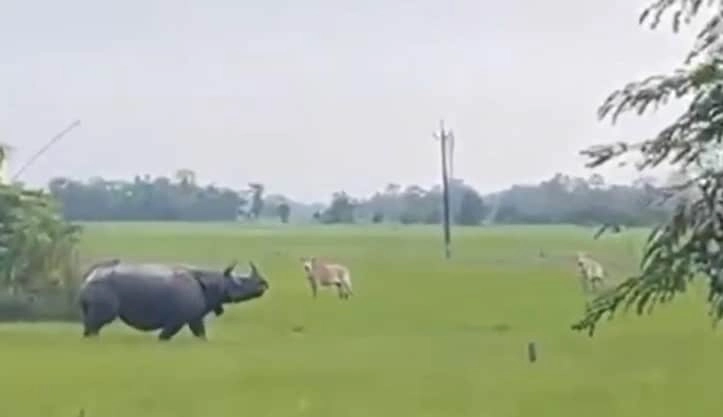In a dramatic turn of events, a rhinoceros recently went on a rampage in a village in Assam, India, causing widespread panic among the local residents. The incident unfolded as the large animal, likely searching for food or feeling threatened, wandered into the village, disrupting the peace and tranquility of everyday life. Witnesses reported scenes of chaos as villagers fled their homes, seeking safety from the massive creature that seemed agitated and unpredictable.
The rhino’s sudden appearance in the village not only startled the residents but also posed a significant threat to their safety. Villagers scrambled to gather their belongings and escape to safer areas, while some brave individuals attempted to record the unfolding events on their mobile devices. The sight of a rhinoceros, typically found in the wild, roaming through a populated area is both awe-inspiring and terrifying, highlighting the delicate balance between wildlife and human habitation in regions like Assam, which is known for its rich biodiversity.
Local wildlife authorities were alerted to the situation and quickly mobilized a team to manage the incident and ensure the safety of both the villagers and the rhino. Such encounters are not uncommon in Assam, where human-animal interactions have been on the rise due to habitat encroachment and environmental changes. The authorities faced the challenge of safely guiding the rhino back to its natural habitat while minimizing the risk of injury to the animal and the local community.
As the situation unfolded, it became evident that education and awareness about wildlife conservation are crucial. Villagers need to understand the behavior of animals like rhinos and how to coexist with them safely. This incident serves as a reminder of the pressing need for effective wildlife management strategies and community engagement to prevent similar occurrences in the future. The balance between preserving wildlife and ensuring human safety remains a critical issue in regions where urban development encroaches on natural habitats.




